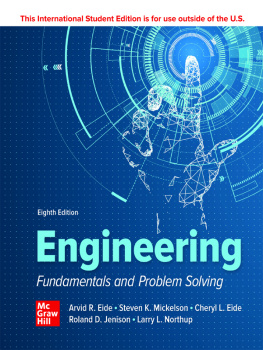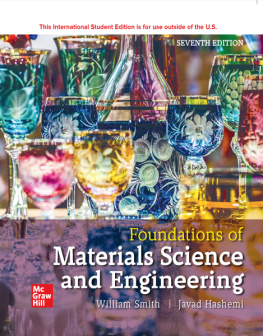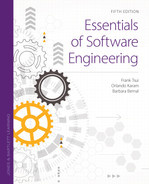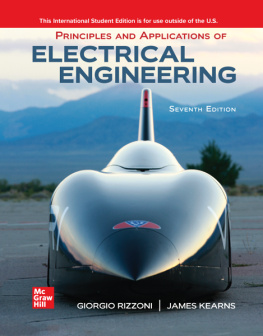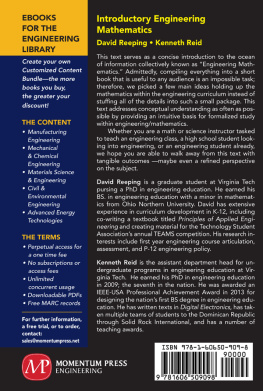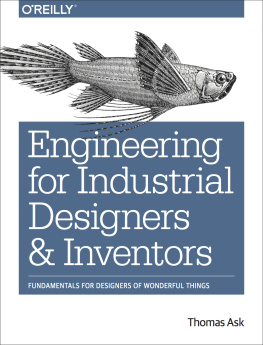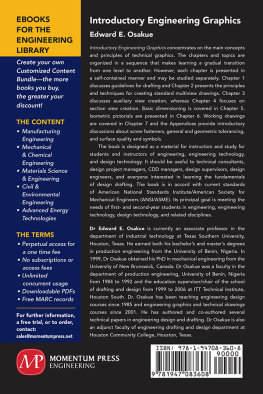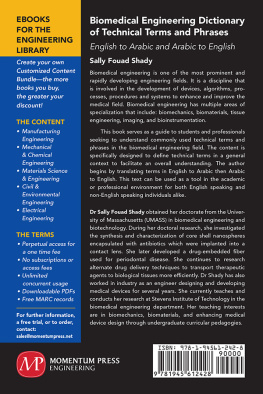
Table of Contents
List of Tables
- Chapter 02
- Chapter 03
- Chapter 04
- Chapter 05
- Chapter 06
- Chapter 07
List of Illustrations
- Chapter 01
- Chapter 01
- Chapter 02
- Chapter 03
- Chapter 04
- Chapter 05
- Chapter 06
- Chapter 07
- Chapter 09
Guide
Pages
Principles of Forensic Engineering Applied to Industrial Accidents
Luca Fiorentini
TECSA S.r.l.
Italy
LucaMarmo
Politecnico di Torino
Italy
Copyright
This edition first published 2019
2019 John Wiley & Sons Ltd
All rights reserved. No part of this publication may be reproduced, stored in a retrieval system, or transmitted, in any form or by any means, electronic, mechanical, photocopying, recording or otherwise, except as permitted by law. Advice on how to obtain permission to reuse material from this title is available at http://www.wiley.com/go/permissions.
The right of Luca Fiorentini and Luca Marmo to be identified as the authors of this work has been asserted in accordance with law.
Registered Offices
John Wiley & Sons, Inc., 111 River Street, Hoboken, NJ 07030, USA
John Wiley & Sons Ltd, The Atrium, Southern Gate, Chichester, West Sussex, PO19 8SQ, UK
Editorial Office
The Atrium, Southern Gate, Chichester, West Sussex, PO19 8SQ, UK
For details of our global editorial offices, customer services, and more information about Wiley products visit us at www.wiley.com.
Wiley also publishes its books in a variety of electronic formats and by printondemand. Some content that appears in standard print versions of this book may not be available in other formats.
Limit of Liability/Disclaimer of Warranty
While the publisher and authors have used their best efforts in preparing this work, they make no representations or warranties with respect to the accuracy or completeness of the contents of this work and specifically disclaim all warranties, including without limitation any implied warranties of merchantability or fitness for a particular purpose. No warranty may be created or extended by sales representatives, written sales materials or promotional statements for this work. The fact that an organization, website, or product is referred to in this work as a citation and/or potential source of further information does not mean that the publisher and authors endorse the information or services the organization, website, or product may provide or recommendations it may make. This work is sold with the understanding that the publisher is not engaged in rendering professional services. The advice and strategies contained herein may not be suitable for your situation. You should consult with a specialist where appropriate. Further, readers should be aware that websites listed in this work may have changed or disappeared between when this work was written and when it is read. Neither the publisher nor authors shall be liable for any loss of profit or any other commercial damages, including but not limited to special, incidental, consequential, or other damages.
Library of Congress CataloginginPublication Data
Names: Fiorentini, Luca, 1976 author. | Marmo, Luca, 1967 author.
Title: Principles of forensic engineering applied to industrial accidents /
Luca Fiorentini, Prof. Luca Fiorentini, TECSA S.r.l., IT, Luca Marmo,
Prof. Luca Marmo, Politecnico di Torino, IT.
Description: First edition. | Hoboken, NJ, USA : Wiley, 2019. | Includes
bibliographical references and index. |
Identifiers: LCCN 2018034915 (print) | LCCN 2018037469 (ebook) | ISBN
9781118962787 (Adobe PDF) | ISBN 9781118962794 (ePub) | ISBN 9781118962817
(hardcover)
Subjects: LCSH: Forensic engineering. | Industrial accidents. | Accident
investigationCase studies.
Classification: LCC TA219 (ebook) | LCC TA219 .F57 2018 (print) | DDC
363.11/65dc23
LC record available at https://lccn.loc.gov/2018034915
Cover Design: Wiley
Cover Image: Phonix_a/GettyImages
Dedication
To my wonderful family: to my beloved wife Sonia and to my incredible children Riccardo, Lodovico and Ettore.
To all those who, thanks to this book, will take their first steps in the world of forensic engineering or increase their interest in this fascinating discipline.
Luca Fiorentini
To Baba, Beat, Bibi, Chicco.
To all those guys that believe in science, evidences and knowledge.
Luca Marmo
Foreword by Giomi
Fires and explosions, by their very nature, tend to delete any evidence of their causes, destroying it or making it unrecognizable. Establishing the origins and causes of fire, as well as the related responsibilities, therefore requires significantly complex investigations.
Simple considerations illustrate these difficulties. In the case of arson retarding devices may be used to delay the phenomenon, or accelerating substances, such as petroleum derivatives, alcohols and solvents, by pouring them on combustible materials present on site. The use of flammable and/or combustible liquids determines a higher propagation velocity, the possible presence of several outbreaks of diffuse type which do not occur in accidental fires that usually start from single points, in addition temperatures are higher than those that would result from just solid fuels, such as paper, wood or textiles.
Generally, in accidental fires, burning develops slowly with a rate that varies according to the type and quantity of combustible materials present, as well as to the ventilation conditions of involved buildings. In addition, temperatures are, on the average, lower than those reached in malicious acts.
Obviously, these considerations must be applied to the context: the discovery of a container of flammable liquid is not in itself a proof of arson, on the other hand, the absence of traces of ignition at the place of the fire is not evidence that the fire is of an accidental nature!
Forensic Engineering, science and technology at the same time, interprets critically the results of an experiment in order to explain the phenomena involved, borrowing from science the method of investigation, replacing the experimental results with the evidence collected in the investigation, to understand how a given phenomenon took place and what were its causes, and also any related responsibility.
The reconstruction takes place through reverse engineering to establish the possible causes of the event.
The same scientific and engineering methodologies are used for the analysis of failures of particular elements (failure analysis) as well as the procedures for the review of what happened, researching the primary causes (root causes analysis).
The accident is seen as the unwanted final event of a path that starts from organizational and contextual conditions with shortcomings, due to inefficiencies and errors of design and actual conditions in which individuals find themselves working, and continues by examining the unsafe actions, human errors and violations that lead to the occurrence of the accident itself.
The assessment of the scientific skills and abilities of the forensic engineer should not be limited, as often happens, to just ascertaining the existence of the specialization, but should also include the verification of an actual qualified competence, deducting it from previous experiences of a professional, didactic, judicial, etc. nature.


